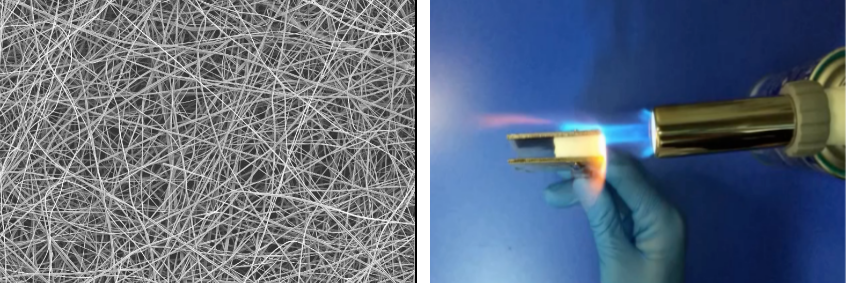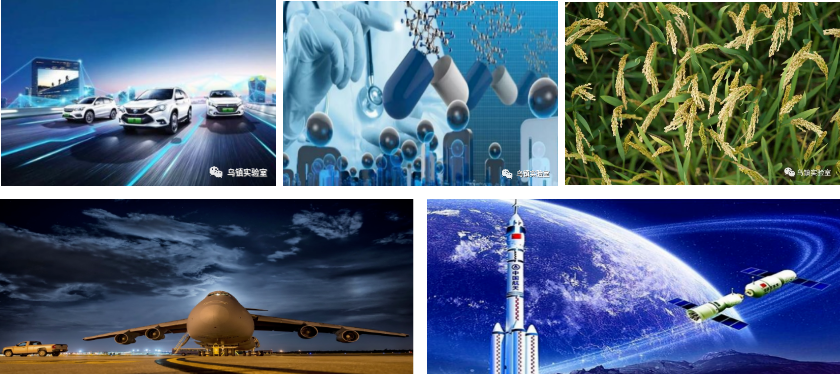1. Why is ultra-fine ceramic fiber material a strategic raw material?
Thermal protection materials are protective materials for daily life, industrial production, and military fields, which need to protect service components working under high temperature or ultra-high temperature conditions to avoid damage or destruction. The thermal resistance principle of ultra-fine ceramic fiber felt is the effect of no convection, infinite shielding plate effect, and infinite path effect brought by its distinctive structure. The heat insulation principle is as follows:
1) There is no convection effect, the porosity of ultra-fine ceramic fiber heat insulation is nano, and the internal air cannot flow freely;
2) Infinite shielding plate effect, nanoscale porosity, infinite porosity wall, minimizing radiation heat transfer to the lowest;
3) Infinite length path effect, heat conduction occurs along the stomatal wall with the stomatal wall at infinite nanoscale.
Due to its unique structure, ultra-fine ceramic fiber thermal insulation has shown excellent performance in many fields, such as thermal, acoustic, optical, electrical, mechanical, etc. It has good application prospects in new energy vehicles, aerospace, military, and other fields. In new energy vehicles, ultra-fine ceramic fiber thermal insulation was essential for passive protection systems. It is mainly used for physical insulation between battery cells, modules, and packs. In the aerospace and military industries, ultra-fine ceramic fiber is the primary raw material of advanced ceramic composite materials, so it is a strategic raw material in the aerospace field and other extreme service environments.
2. Manufacturing technology of the superfine ceramic spinning material industry
Based on the fully developed microfiber spinning industrialization realization technology, matching equipment, and process, the macro-preparation technology of microfiber materials with a length-to-diameter ratio ≥1000 based on gas spinning has been developed. GAS spinning technology uses high-speed airflow to shear and deform the solution (molten liquid), the droplet surface forms a jet, and wind shear and stretching to prepare microfibers. The prepared fiber diameter can be adjusted in the range of 100nm-1000nm. High-speed air spinning technology is suitable for efficient, controllable, and large-scale preparation of microfibers in various material systems. It is ideal for manufacturing various polymer and multi-system microfibers such as metal and ceramic bases. It can quickly improve the production efficiency of microfiber and reduce the unit cost of the product. Ceramic fiber cotton with a diameter as low as 100 nanometers, pure inorganic material, maintains good flexibility and elasticity under ultra-high and ultra-low temperature conditions, has no pulverization and slag removal, and has excellent compression fatigue resistance, excellent adiabatic performance and excellent adiabatic performance and high-temperature stability.
At present, the technology is applied to polymer microfibers and filter materials in high-end air filtration, water filtration, and other fields; Microfibers and ceramic products for high-temperature ultra-light heat insulation in the field of new energy and aerospace batteries; Carbon microfiber fluid collector and electrode materials for electrochemical energy storage fields such as lithium power; Silver microfibers and transparent electrodes for flexible electronics; Technical advances have been made in the fields of functional microfibres for the extraction of uranium from seawater.
3. Main applications of superfine ceramic fiber material
In the civil aspect, ultrafine ceramic fiber materials can be widely used in new energy vehicle protection, power battery safety protection, energy storage battery safety protection, industrial pipeline energy conservation and insulation, construction energy conservation, biomedical fields, and other industries and fields.
In the field of defense, a reliable thermal protection system is one of the critical systems for the safe flight of high-performance spacecraft, and the design of a thermal protection structure and the selection of thermal protection materials are the keys to the design and development of the development of thermal protection system. Ultra-fine ceramic fiber material is one of the leading materials for the thermal protection of aerospace aircraft due to its excellent high-temperature resistance, corrosion resistance, and heat insulation properties. As a high-temperature insulation material, it has a significant market prospect in the aerospace, aviation, and military industries.




